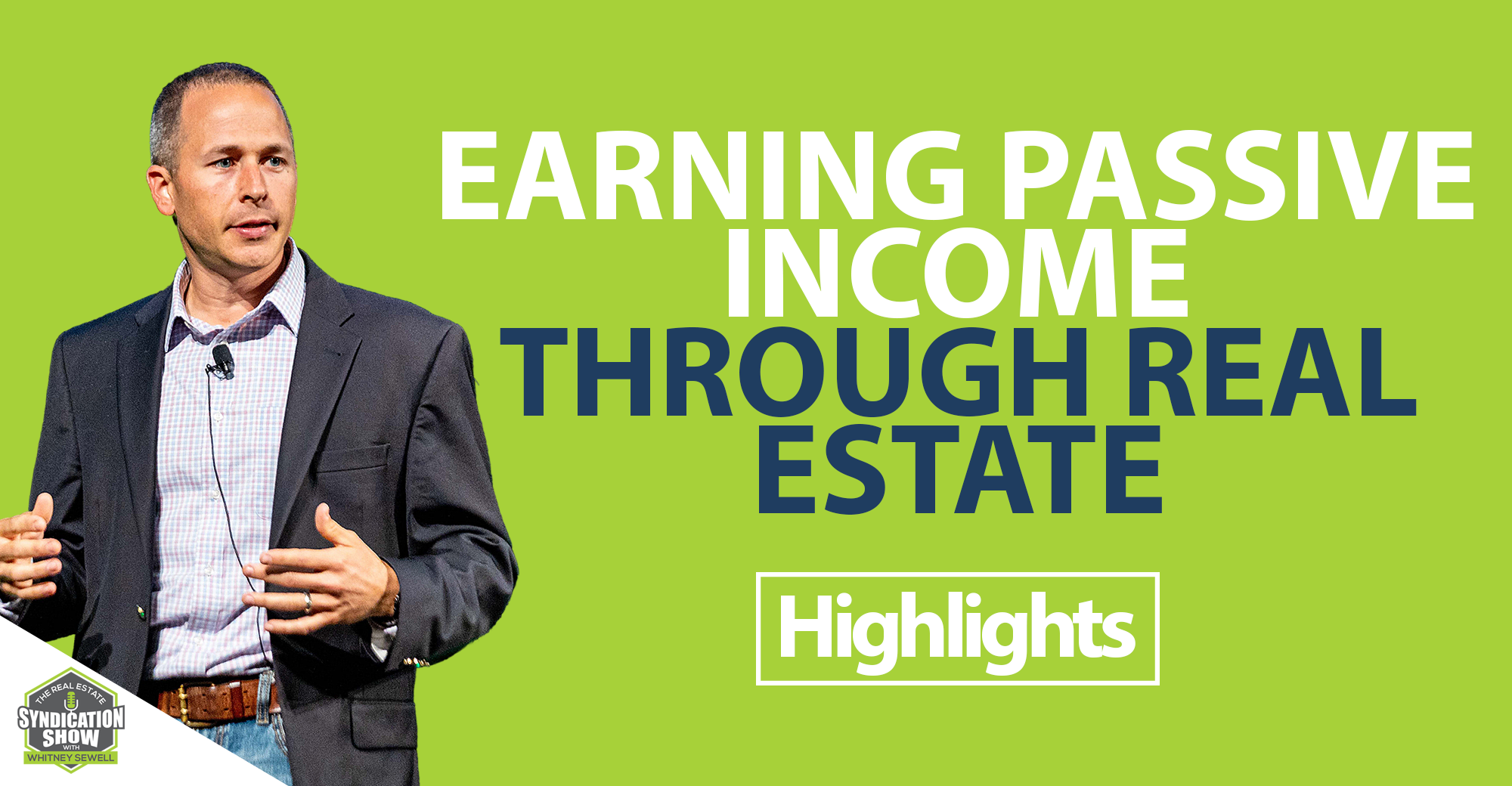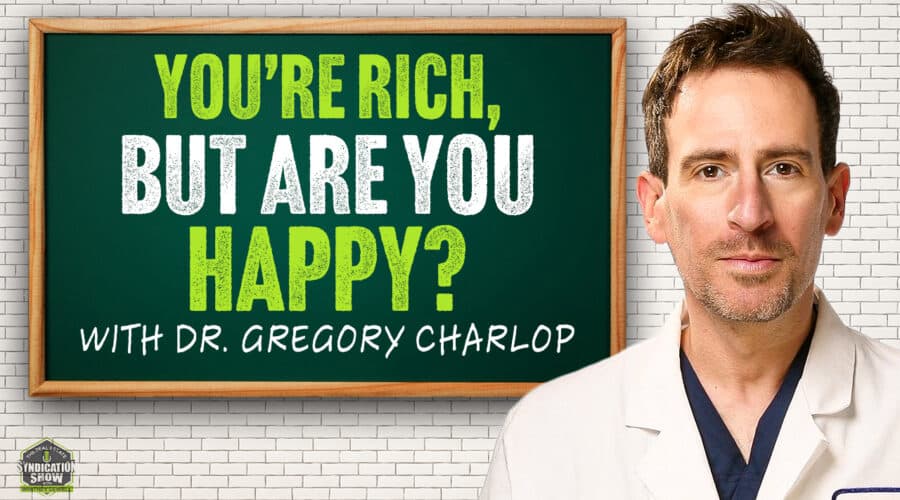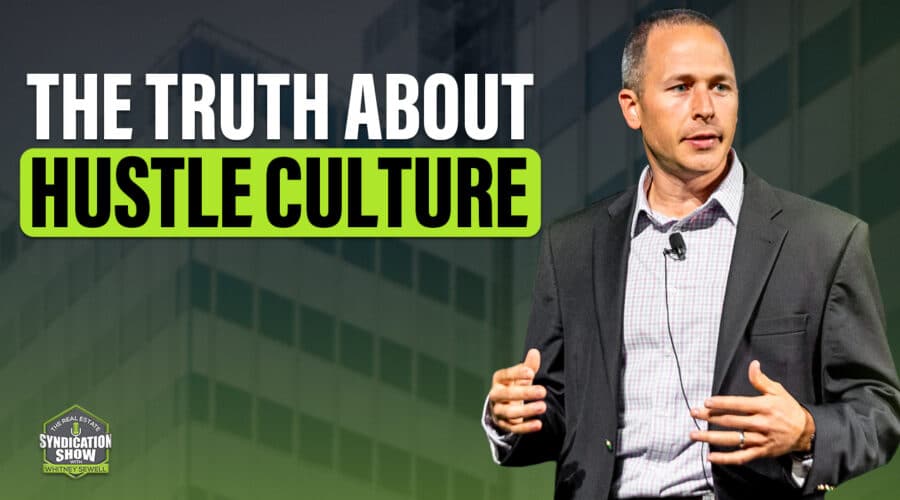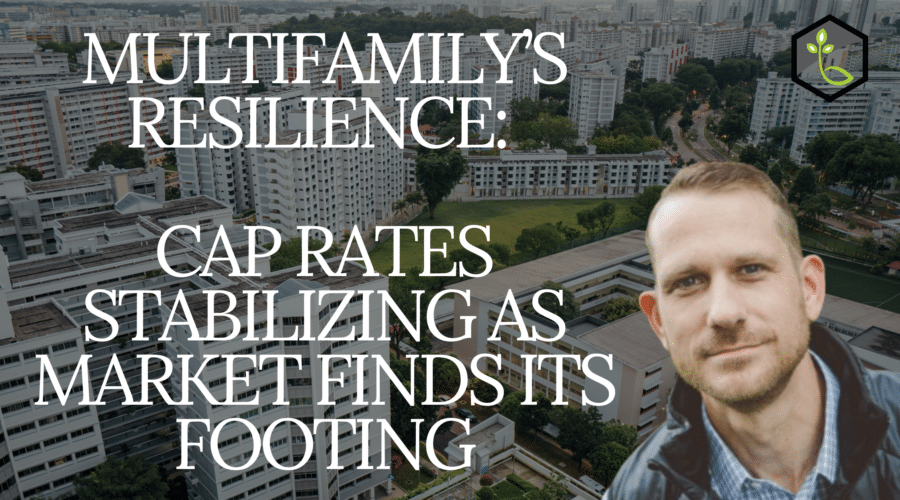
There are two kinds of real estate investors: active and passive. In this #Highlights episode, we look back at our conversations with successful passive investors. They are Kay Kay Singh and Rachel Richards.
Podcast Production Services
Are you about to start a podcast? Or are you producing a podcast and tired of doing the editing yourself? We have produced over 1000 daily shows and the production team that we’ve created are now available to produce for you as well. We can do as little or as much as you need, from finding and communicating with guests, preparing introductions, to editing the audio and video. You’ll sound better, have a more professional presence, and you’ll have more time doing other valuable tasks on your business. Let me know if you’re interested by emailing whitney@lifebridgecapital.com.
Watch the episode here:
Listen to the podcast here:
Kay Kay details how he became a successful passive investor in real estate and what you should be looking for a deal sponsor. Meantime, Rachel sheds light on how real estate played a key role in achieving her goal of retiring at 27 years old and earning five digits per month passively. Enjoy the show!
Key Points From This Episode:
- Kay Kay takes us back to when and how he decided to be a passive investor and learn to do this business.
- How to know who to partner with and what you should be looking for a deal sponsor?
- Kay Kay details how he builds his criteria for a specific deal sponsor.
- Why having a strong growth market and job growth in an area are good indicators for the success of the investment?
- Kay Kay’s tip to start earning passively: start investing in yourself first by educating yourself about real estate and syndication.
- Hear more about Rachel’s journey of creating passive income.
- What prompted Rachel to pursue real estate investing and some key educational resources.
- The three main metrics Rachel focuses on when doing the financial analysis of a property.
- Rachel’s tips on projections and the importance of being conservative with them.
- Common mistakes Rachel sees first-time investors making when projecting expenses.
Tweet This!
“First of all in my criteria, number one is the strong growth market. I want to see at the population of the market. I want to see the job growth of the market. When I receive these offering memorandums, I signed up with several indicators.” – Kay Kay Singh
“I always suggest to your audience that invests in yourself before you invest in any real state. Try to learn the business. Try to educate yourself. There’s a lot of material out there that’s free.” – Kay Kay Singh
“To me, real estate investing is one of the best tools for building long-term wealth.” – Rachel Richards
“I always tell people, you have to budget in an expense for a property manager because most likely, most of us don’t want to quit our jobs to become full-time landlords. To make rental income truly passive, you have to have a property manager in place.” – Rachel Richards
Links Mentioned in Today’s Episode:
WS244: Passive Investing In Real Estate with Kay Kay Singh
Hold: How to Find, Buy, and Rent Houses for Wealth (Millionaire Real Estate)
WS643: Retired at Age 27 with $10,000 per Month in Passive Income with Rachel Richards
About Kay Kay Singh

A successful multi-business owner owning multiple Gas stations and convenience stores, a Laundromat, 40 SFRs in Northeast Indiana, and Multifamily syndicated deals at Several locations in the US.
Have several agricultural, commercial and residential properties in India. Has over 18+ years of business experience in the U.S. and always seeking expansion opportunities. Always interested in new investment opportunities.
About Rachel Richards

At only 27 years old, former financial advisor Rachel Richards has made a name for herself in the personal finance realm. In 2019, Rachel quit her job and retired, with over $10,000 per month in passive income! She is the bestselling author of Money Honey and Passive Income, Aggressive Retirement. She has been featured on the Penny Hoarder and The New York Times and has been contracted to speak at colleges. Rachel is also a real estate investor with 35 rental units. Her valuable money lessons have helped thousands of millennials work their way out of financial despair. She has successfully done what no one has done before: made the topic of money management fun, entertaining, and simple!
Full Transcript
EPISODE 1205
[INTRODUCTION]
0:00:00.0
Whitney Sewell (WS): This is your Daily Real Estate Syndication Show and I’m your host, Whitney Sewell. Today is a Highlights show that’s packed with value from different guests around a specific topic.
Don’t forget to like and subscribe but also go to LifeBridgeCapital.com where you can sign up to start investing in real estate today. I hope you enjoy the show!
[INTERVIEW 1]
0:00:24
WS: Our guest is Kay Kay Singh. Thanks for being on the show again, Kay Kay.
0:00:27
Kay Kay Singh (KS): Thank you. It’s my pleasure, Whitney.
0:00:30
WS: You wanted to get into multifamily. You quickly realize how long it was going to take with single-family to scale, so you started pursuing multifamily, started submitting those LOIs. All of them get rejected. Quickly you realized it was a whole new animal than what you had been doing. Let’s walk through that approach a little bit because I’ve had numerous people invest with me and they’re looking to be a syndicator, they’re looking to get into deals and eventually be a deal sponsor like yourself. They’ve invested just to learn the industry and learn the business better as you did. Let’s help the audience or maybe the potential investor who wants to be a syndicator or a deal sponsor. Go through those thought processes that you were having as far as should I be a passive investor so I can learn the business or should I keep putting in my LOIs. Take us back to when you were there and how you decided to be passive and learn to do this business.
0:01:24
KS: When I was in the gas station business and I have a lot of cash flow because I have eight gas stations and a laundromat, my main purpose was how can I reduce my taxes? We bought these 40 single-family houses and ended up paying even more taxes. I signed up on BiggerPockets, and started learning about multifamily and the syndication process. That’s when I learned about what syndication is. I started following syndicators on BiggerPockets and went to their website, kept learning, read some books about syndication. Finally, I decided to take some courses. When I started, I was not invested in becoming a syndicator, but I thought, “I’m going to keep investing passively.” As I started learning, I realized that it was my passion.
I decided to go active instead of passive. I took four courses that had a lot of syndication books, and I read a lot of other books. Also, I got into some motivational stuff since I attended Rod Khleif’s camp. It was so motivational. I started learning about motivations. I had been setting up my goals, but most of my goals I can’t meet because I was not doing the right way. I started learning about setting goals, how to set goals, how to track my goal, and how to be very specific on the goal. I started learning all that motivational stuff and kept moving on onwards and upwards, which is the motto of our company. I kept learning and kept doing some stuff every day. Finally, I invested in seven deals passively. In two deals, I’m a general partner. I kept moving on upwards and onwards and that’s how I got here.
0:03:39
WS: You’re very experienced as a passive investor. You’ve invested in seven deals. Let’s help the passive investor from your experience to know who to partner with and what we should be looking for. Maybe help them get started off a few things that they should do to help narrow down the deals, the opportunities to quickly say, “Here are some sponsors that I want to start hearing their opportunities.” How do we know who those people should be?
0:04:05
KS: I started following them on BiggerPockets. I have been writing, taking notes, and making links in my Evernote. I’m very passionate about Evernote. I use Evernote a lot. I made a list of sponsors who I found on the internet. First, I started with BiggerPockets. I made a whole list and then I started following them on BiggerPockets. From there, I went to their website, did some research, did their track record, how many deals they have done. I started calling them and interviewing them. I made a list of all these 42 questions to ask them. As I kept learning, the list started to grow bigger. I wrote down my criteria of investment but that was passive. How do I pick up my sponsor? How do I pick up the deals? Finally, I picked up one sponsor to start with. The closest one was in Indianapolis, which was Ivan Barratt. I invested in the deal and kept learning. I got access to the reports. Every three months, they send the reports. I go to the portal and I can download the report and read those reports. What’s going on on the property? Also, I could see the money flowing in. That’s how I figured it out. I did the research on several other sponsors too and I’m invested with four or five different sponsors.
0:05:53
WS: Could you help us with those criteria? Somebody that is just getting started, they don’t understand how to come up with the criteria they should have. Kay Kay, help them build their criteria for that deal sponsor or the criteria like you had.
0:06:08
KS: First of all in my criteria, number one is the strong growth market. I want to see at the population of the market. I want to see the job growth of the market. When I receive these offering memorandums, I signed up with several indicators. I talk to several of them. I got on their email list and started receiving the OM. I go online since I had taken all these classes in the coaching program from Rod Khleif, Neal Bawa, and some others. I know how to discuss the market. I did my own research. From the job market, I looked at the underwriting if it’s conservative underwriting or it’s liberal underwriting. I do my own research and then I look at my minimum IRR. I want my money to double in five to six years. I always invest with the investors that have skin in the game. That’s one of my criteria. I want to look at the cash-on-cash return and the IRR and I like to address it within five to seven years. These criteria may differ from person-to-person depending on their goals and their financial ability to invest. This is what my criteria are. I wrote it down. I am also going to be at some point in investing in other asset classes, like the mobile parks and the solo unit, but I’m focusing on the multifamily.
0:07:57
WS: We’ve talked at numerous events and stuff and it’s been great to get to know you and your growth in this business as well and see that happen. One key thing about you is that you have educated yourself. You have spent the time and the money. You’ve met the people in the business. Even if you never became a general partner or a deal sponsor, you’re much more educated, you are much savvier about investing in these types of opportunities because of the work you’ve done beforehand.
Even talking about a strong growth market and knowing where to find that information and what that should look like, especially to the underwriting and numerous other things you mentioned, most investors are busy with their other business or their day job, whatever that may be. They don’t want to take the time to educate themselves like you have.
Maybe for the audience, let’s break a few of those down as far as the strong growth market, job growth. What’s going to help you see that this is a good market as far as job growth and population growth? Do you have a couple of specific things on the amount of growth or maybe where you have found that information?
0:09:14
KS: Whitney, if there is no job growth or if there is no population growth, you cannot expect your occupancy to be higher. You cannot expect the rank to go up. It’s a demand and supply thing. If the population is going down, definitely the vacancy is going to be higher. If people don’t have money, if the people are losing jobs as they did in 2007, 2008, what they do normally is consolidating themselves. If the son is living separately, they’ll move with their parents so that they can make both ends meet. I think these are the basic points population and job growth are the two keys that everybody should be looking at as they invest as a limited partner or a general partner or even if they buy a property for themselves.
0:10:14
WS: Any final words for that passive investor that’s looking to invest in deals? Maybe they’re just learning the syndication business. They’re brand new to this type of asset or this type of investing. What would you tell them? Any final things that I didn’t ask you that you’d like to share with them?
0:10:28
KS: I always suggest to your audience that invests in yourself before you invest in any real state. Try to learn the business. Try to educate yourself. There’s a lot of material out there that’s free. Also, join some Facebook groups. There are a lot of people throwing a lot of information there. You can learn from them. Buy some books, read some books, podcasts, all free stuff where you can learn. I listen to one podcast every day and I have been listening to it for about three years.
[INTERVIEW 2]
0:11:11
WS: Our guest is Rachel Richards. Thanks for being on the show, Rachel.
0:11:14
Rachel Richards (RR): Yeah. Thanks for having me, Whitney.
0:11:16
WS: Rachel retired at age 27 with over $10,000 per month in passive income and we’re going to learn today how she did that and just what passive income is. She’s the author of two best-selling books on financial literacy, a real estate investor with almost 40 rental units.
Rachel, thank you again for your time being on the show with us today. I’m really looking forward to hearing your story. I love stories like this, especially at 27. I mean, that’s what everybody dreams about, right?
0:11:43
RR: Yeah, it’s crazy. I never imagined I would retire this young, but here we are.
0:11:48
WS: Give us a little more about that story, or I know we want to jump into it, but let’s go back a little bit. Is real estate always been a dream of yours? Was it something that somebody – you saw somebody else do when you were a teenager? Get us started a little bit.
0:12:03
RR: Yeah. I mean, even since a young age, I’ve been a total finance nerd and really interested in how to create a lot of money. I was an avid reader all throughout middle school, high school, college. I’d learned a lot about real estate investing. It’s something I always wanted to do. To me, real estate investing is one of the best tools for building long-term wealth.
2017 is when my journey of creating passive income started. At the beginning of that year, my husband and I had zero dollars in passive income. That year, we invested in our first rental property. We purchased our first duplex. Then later that year, I wrote and published my first best-selling book, Money Honey.
We had these two passive income streams; rental income and royalty income. We focused on growing those as much as we possibly could over the next few years. Fast forward to today, we now have almost 40 units. Last year, I just launched my second book. My book royalty income has increased significantly and that is how I was able to quit my job and retire last year at the age of 27.
0:13:07
WS: Wow. Okay. How did you educate yourself and what pushed you into real estate at that time? I mean, most people are pursuing some type of career, or a corporate career, some other type of avenue. What was it for you?
0:13:20
RR: Yeah. I’ve had a pretty varied background. I started as a financial advisor. Even before then, I was reading tons of books. That’s primarily how I learn anything. Then I was licensed in my series 7, series 66 license to help people invest. Then I actually took a job in a real estate position, where I was working for somebody who was flipping properties. I took the job because I knew I wanted to do it myself, so I figured this is going to be a great learning experience for me. I ended up getting my own real estate license just for the sake of me purchasing my own investment properties. That’s how I really got into real estate investing.
0:13:57
WS: Okay. Now you’ve got the bug. You’re like, “Okay. We’re going to do this.” You’re educating yourself. I guess, first, though, give us a couple of key things that helped to educate you and even – yeah, let’s start there. What were you reading? What was educating you to make you take action like that?
0:14:13
RR: I think one of the first books I read about real estate investing was Rich Dad Poor Dad because he talks about it. Then I was like, “This sounds really cool.” Then from there, I have read all sorts of books. One of my favorite books about rental property investing specifically is called Hold by Steve Chader and the McKissacks. It’s so, so good. I still use some of their templates to do analysis. Those are some great resources.
Then, one of the things you have to be really good at from the get-go is doing your projections and doing your financial analysis. It’s important to have a really great spreadsheet, or calculator, or some type of resource where you can project out, “Okay, here’s how much I think I’m going to be able to rent the property for, here’s the vacancy, here’s all the expenses.” Then being able to look – The two metrics I look at are the cash-on-cash ROI and the capitalization rate. I focus on those two things and the cash flow.
Other investors focus on a lot of other metrics, but in my opinion, those are the three main metrics to focus on. I just think having a good understanding of those, what those are, and being able to accurately project out your rental income and expenses, that’s really important.
0:15:25
WS: Okay. Yeah, and projecting things like that. Any other tips for projecting those items? Maybe you could list those again, what you said was most important to you.
0:15:32
RR: Yeah, the rent revenue, you have to project. The way I do that is I basically look on Craigslist and Zillow to see what are the other active rentals to come up with a pretty good estimate. Then I always make it conservative. If everything else out there that’s similar to my property is renting for 800 a month, I’ll just be a little conservative and maybe I’ll estimate, okay, I can get 775 a month for this unit. You have to take into account the vacancy rate as well because it’s not going to be rented 365 days a year. You’re going to have some turnover, so you really need to account for that.
Most investors use an 8% vacancy rate, which means that the property would be vacant for one month out of the year. Now, I think that’s very conservative. I’m hoping my properties are never going to be vacant for a month, but I always estimate it that way just because it’s better to be conservative.
Then you have all of your expenses. This is where a lot of first-time investors make mistakes is where they estimate their expenses because it’s easy to think, “Oh, my rental income minus my mortgage payment and then that’s my profit.”
In reality, there are a lot of other expenses out there that you need to think about. For example, utilities and lawn care. Are you going to pay for that, or is the tenant going to pay for that? Also, think about things like HOA fees, maintenance, and repair, capital expenditures. I always tell people, you have to budget in an expense for a property manager because most likely, most of us don’t want to quit our jobs to become full-time landlords. To make rental income truly passive, you have to have a property manager in place.
Even if you’re not going to hire one from the get-go, just budget that in to make sure the numbers will still work. That’s what I start with to estimate my net cash flow. Then from there, I like to look at the cash-on-cash ROI, which basically takes your annual profit divided by your initial investment. That is an important metric for me because I want to at least be able to beat the stock market. To me, it’s what’s the point of investing if I’m not going to get a higher return than what I could get in the stock market? I’ve always aimed for a minimum of a 12% cash-on-cash ROI.
0:17:45
WS: Okay. I was going to ask you what that would be, or what that figure would be. The $10,000 a month in passive income, is that all from rentals, or mostly rentals?
0:17:54
RR: It’s actually closer to $15,000 a month now. I would say in a normal month, not during coronavirus, but in a normal month, we are profiting anywhere from $7,000 to $12,000 per month from the rentals. Then my book royalties make up the other big chunks. In February, I just had my first $7,000 month in book royalties.
[END OF INTERVIEW]
[OUTRO]
0:18:15
Whitney Sewell: Thank you for being a loyal listener of The Real Estate Syndication Show. Please subscribe and like the show. Share with your friends so we can help them as well. Don’t forget to go to LifeBridgeCapital.com where you can sign up and start investing to real estate today. Have a blessed day!
[END]
Love the show? Subscribe, rate, review, and share!
Join the Real Estate Syndication Show Community:




